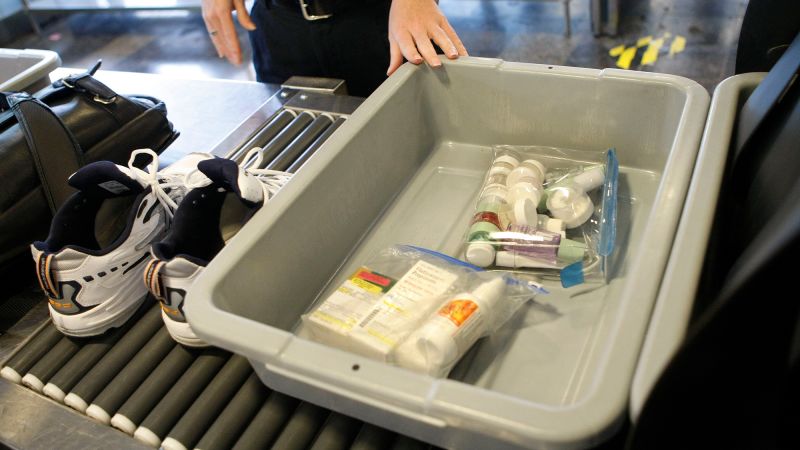Preventing Hereditary Illness: The Three-Parent IVF Method

Welcome to your ultimate source for breaking news, trending updates, and in-depth stories from around the world. Whether it's politics, technology, entertainment, sports, or lifestyle, we bring you real-time updates that keep you informed and ahead of the curve.
Our team works tirelessly to ensure you never miss a moment. From the latest developments in global events to the most talked-about topics on social media, our news platform is designed to deliver accurate and timely information, all in one place.
Stay in the know and join thousands of readers who trust us for reliable, up-to-date content. Explore our expertly curated articles and dive deeper into the stories that matter to you. Visit Best Website now and be part of the conversation. Don't miss out on the headlines that shape our world!
Table of Contents
Preventing Hereditary Illness: Exploring the Three-Parent IVF Method
The prospect of preventing devastating hereditary illnesses before a child is even born is a powerful motivator in the field of reproductive medicine. For families facing the heartbreaking reality of mitochondrial diseases, a groundbreaking technique offers a glimmer of hope: three-parent IVF. This innovative procedure has ignited both excitement and ethical debate, promising a future where debilitating genetic conditions can be avoided. But what exactly is three-parent IVF, and how effective is it in preventing hereditary illness?
Understanding Mitochondrial Diseases and Their Inheritance
Mitochondrial diseases are a group of disorders caused by mutations in mitochondrial DNA (mtDNA). Unlike nuclear DNA, which is inherited equally from both parents, mtDNA is inherited almost exclusively from the mother. These mutations can severely impact energy production within cells, leading to a wide range of debilitating symptoms, affecting organs like the heart, brain, muscles, and kidneys. Conditions like Leigh syndrome, MELAS syndrome, and myoclonic epilepsy with ragged red fibers (MERRF) are just a few examples of the devastating effects of mitochondrial dysfunction. These conditions often lead to significant disability and shortened lifespans.
How Three-Parent IVF Works: A Closer Look
Three-parent IVF, also known as mitochondrial donation therapy, is a complex procedure designed to prevent the transmission of faulty mtDNA from mother to child. The process involves using the nuclear DNA from the mother's egg and the healthy mitochondria from a donor egg. The mother's nuclear DNA is carefully extracted from her egg and transferred into a donor egg that has had its own nuclear DNA removed. This modified egg, now containing the mother's nuclear DNA and the donor's healthy mitochondria, is then fertilized with the father's sperm. The resulting embryo carries genetic material from three individuals: the mother, the father, and the mitochondrial donor.
The key steps involved in three-parent IVF are:
- Egg retrieval: Eggs are retrieved from both the mother and the donor.
- Nuclear DNA transfer: The mother's nuclear DNA is carefully removed from her egg and inserted into the enucleated donor egg.
- Fertilization: The modified egg is fertilized with the father's sperm using in-vitro fertilization (IVF) techniques.
- Embryo development: The fertilized egg develops into an embryo, which is then screened for any remaining faulty mtDNA.
- Embryo transfer: The healthy embryo is implanted into the mother's uterus.
Success Rates and Ongoing Research
While three-parent IVF offers hope, it's crucial to understand that it's not a guaranteed solution. Success rates vary, and ongoing research is crucial to improve the technique's efficacy and safety. The procedure is complex, and there's a small chance of the faulty mtDNA transferring despite precautions. Moreover, long-term studies are needed to fully understand the potential long-term health effects on children born via this method. Further research is also investigating other approaches to mitochondrial replacement therapy.
Ethical Considerations and the Future of Three-Parent IVF
The advent of three-parent IVF has sparked intense ethical debates. Concerns about the long-term health consequences for the child, the potential for unintended genetic modifications, and the implications for parental rights have all been raised. Regulations surrounding this technology vary significantly across countries, reflecting the complex ethical and societal implications. As research progresses, careful consideration of these ethical concerns will be paramount in shaping the future of this transformative technology.
Further Reading:
Conclusion:
Three-parent IVF presents a remarkable advancement in reproductive medicine, offering the potential to prevent the transmission of serious mitochondrial diseases. While challenges remain, including ongoing research and ethical considerations, this technique holds significant promise for families at risk of inheriting these debilitating conditions. The future of this technology hinges on continued research, ethical dialogue, and careful regulatory oversight.

Thank you for visiting our website, your trusted source for the latest updates and in-depth coverage on Preventing Hereditary Illness: The Three-Parent IVF Method. We're committed to keeping you informed with timely and accurate information to meet your curiosity and needs.
If you have any questions, suggestions, or feedback, we'd love to hear from you. Your insights are valuable to us and help us improve to serve you better. Feel free to reach out through our contact page.
Don't forget to bookmark our website and check back regularly for the latest headlines and trending topics. See you next time, and thank you for being part of our growing community!
Featured Posts
-
 Changes To Airport Security The Future Of Liquids In Carry On Bags
Jul 18, 2025
Changes To Airport Security The Future Of Liquids In Carry On Bags
Jul 18, 2025 -
 Emily Ratajkowski And Timothy Olyphants Hilarious Late Night Interview
Jul 18, 2025
Emily Ratajkowski And Timothy Olyphants Hilarious Late Night Interview
Jul 18, 2025 -
 Uk Airport Kiss And Fly Fees Soar Rac Report Highlights Increases
Jul 18, 2025
Uk Airport Kiss And Fly Fees Soar Rac Report Highlights Increases
Jul 18, 2025 -
 Cane Sugar For Coca Cola Trumps Announcement And Its Potential Impact
Jul 18, 2025
Cane Sugar For Coca Cola Trumps Announcement And Its Potential Impact
Jul 18, 2025 -
 Nypd Under Mayor Adams Lawsuit Claims Racketeering And Corruption
Jul 18, 2025
Nypd Under Mayor Adams Lawsuit Claims Racketeering And Corruption
Jul 18, 2025
Latest Posts
-
 Uk Airport Kiss And Fly Fees Soar Rac Report Highlights Increases
Jul 18, 2025
Uk Airport Kiss And Fly Fees Soar Rac Report Highlights Increases
Jul 18, 2025 -
 Karate Kid Legends Tops Weekly Fandango Rentals Sonys Success
Jul 18, 2025
Karate Kid Legends Tops Weekly Fandango Rentals Sonys Success
Jul 18, 2025 -
 Air India Fuel Emergency Captains Calm Actions Prevent Disaster
Jul 18, 2025
Air India Fuel Emergency Captains Calm Actions Prevent Disaster
Jul 18, 2025 -
 Joaquin Phoenix On Infamous Letterman Appearance Regret And Reflection
Jul 18, 2025
Joaquin Phoenix On Infamous Letterman Appearance Regret And Reflection
Jul 18, 2025 -
 Coca Colas Corn Syrup Replacement Trumps Announcement And Industry Impact
Jul 18, 2025
Coca Colas Corn Syrup Replacement Trumps Announcement And Industry Impact
Jul 18, 2025
